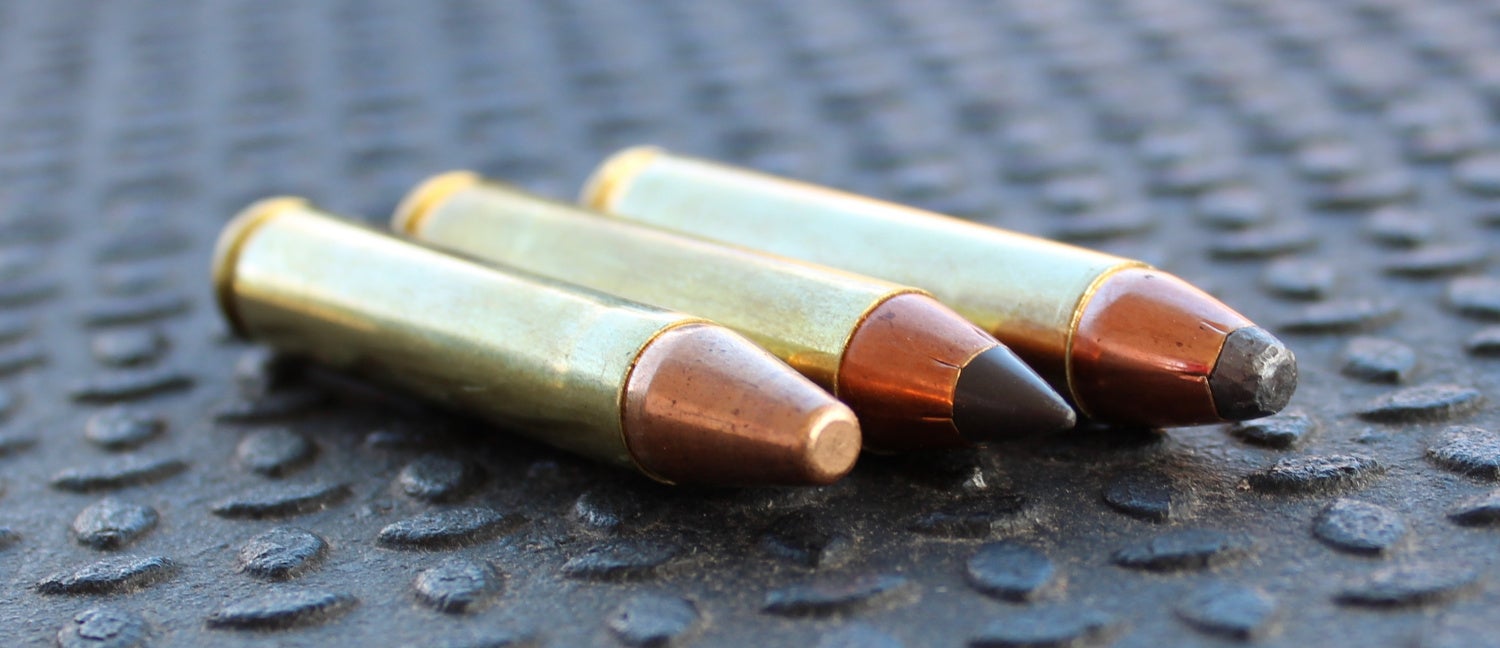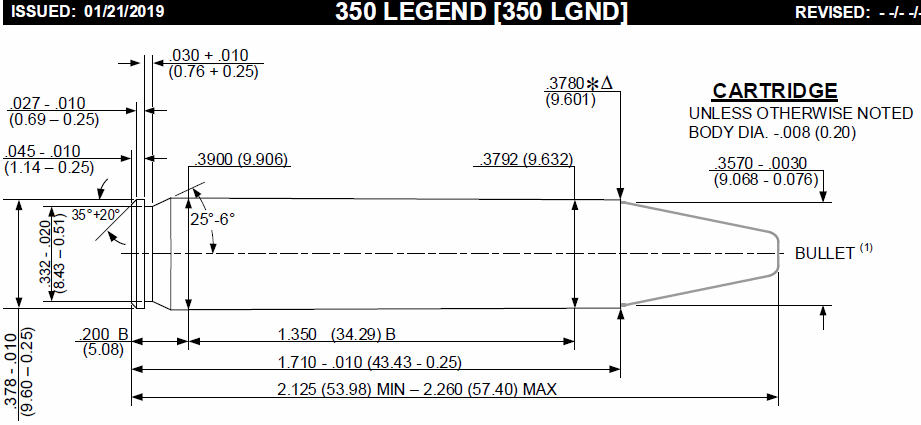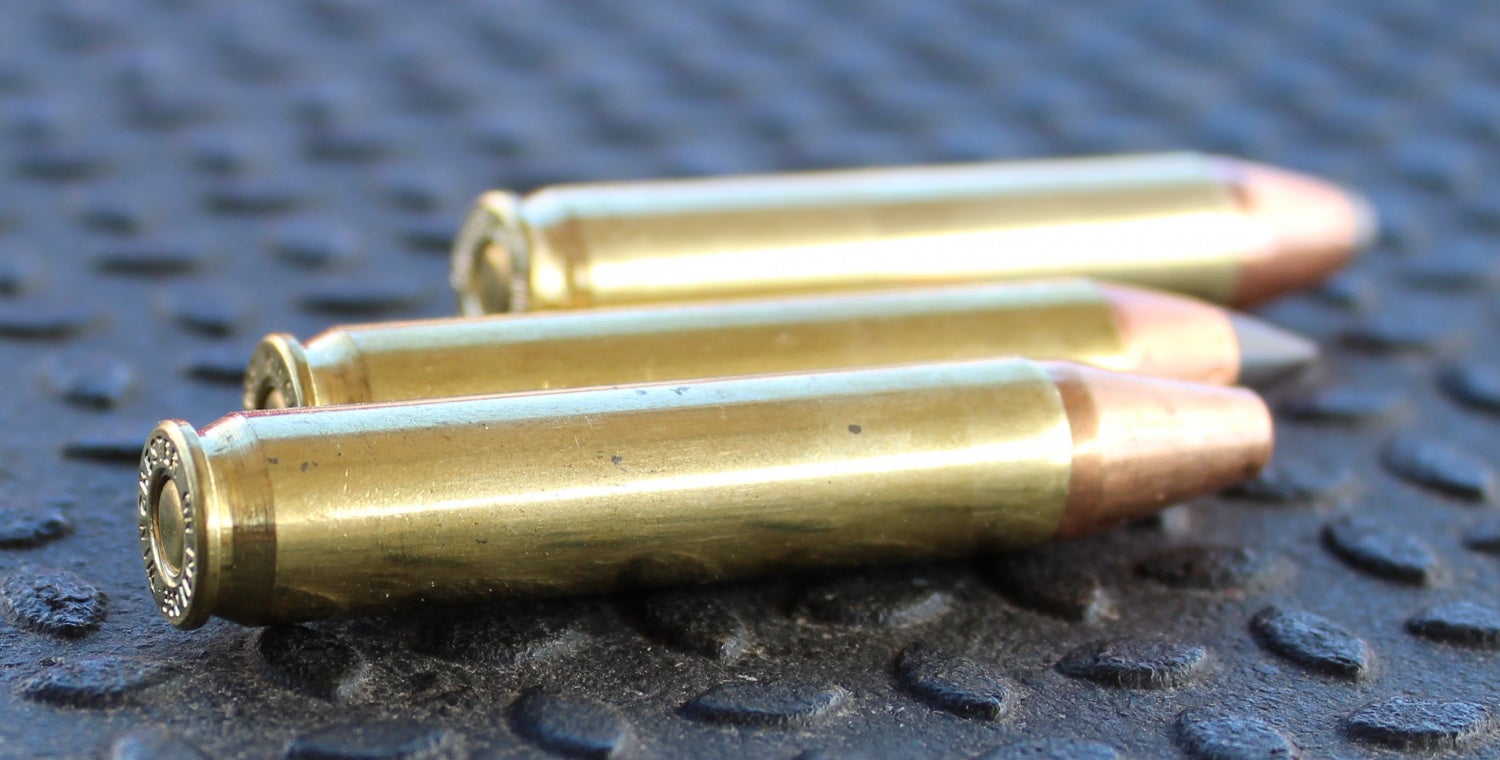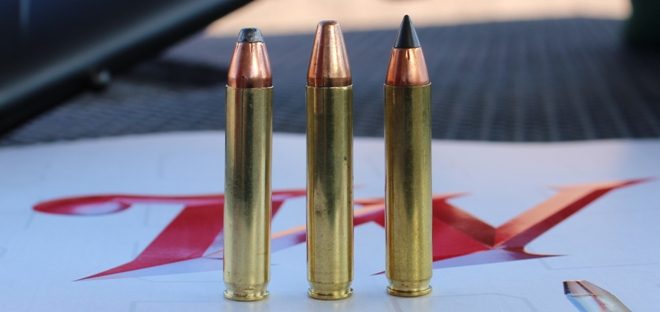At the beginning of the current year, during the SHOT Show 2019, Winchester introduced a new cartridge – the .350 Legend. This cartridge has a straight walled case and it is primarily marketed to hunters who live in areas where hunting certain species is allowed only with straight-walled cartridges. Having a completely new cartridge case design, the .350 Legend has probably stimulated the imagination of those of you who are wildcat-minded. In this article, we’ll discuss the wildcatting potential of this new case. Let’s see what new cartridges can be created using the .350 Legend case.

First things first, let’s address a misconception that’s floating around on the Internet. The .350 Legend is NOT based on the .223 Remington case. It is not a blown out straight walled .223/5.56. This cartridge has a completely new case with a slightly larger base than the .223 Remington, however, its rim is rebated to .378″ diameter – identical to the rim diameter of the .223 Rem. Obviously, the rebated rim is incorporated into the .350 Legend case design to allow using standard AR-15 .223/5.56 bolts with this new cartridge.

SAAMI drawing of the .350 Legend cartridge
So, being a completely new design, the .350 Legend case can become a parent case for some interesting new cartridges. Let me offer you several wildcat cartridge ideas.
.366 Caliber Subsonic Cartridge
As you can see in the SAAMI drawing, the case of .350 Legend is ever so slightly tapered. So technically, it is not a true straight-walled cylindrical case like, for instance, the .357 Magnum. When thinking about wildcatting possibilities of this new case, I asked myself what could be the largest caliber bullet that we can stick in this case if we completely straighten it up leaving no case body taper. A quick calculation revealed that .366 caliber (9.3mm) bullets should fit just perfectly.
Now, you may say that .366 is an odd European caliber, however, many US companies are making bullets in this caliber which I assume are mostly used in the 9.3x62mm cartridge. For example, if you visit the MidwayUSA website, you’ll find out that they currently offer 23 different .366 cal bullets made by Hornady, Speer, Barnes, Nosler, Woodleigh, and Swift.
The most popular grain weights of these .366 caliber bullets are the 250 and 286. In order to load the bullets designed for the 9.3x62mm to the same seating depth in the new cartridge, we’ll need to have the same space for the bullet over the case (OAL/case length difference). For the 9.3x62mm that distance is .850″ (21.6mm). If we subtract that from the 2.26″ length of AR cartridges, we’ll get an optimal case length of 1.41″. In other words, if we blow out the .350 Legend case to a truly straight-walled cylindrical shape, shorten the case to the 1.41″ length and load with .366 cal bullets designed for the 9.3x62mm (loaded to the same depth), we’ll get the largest caliber and arguably most optimal dedicated subsonic cartridge that can be created using the .350 Legend case. Although Winchester offers a subsonic .350 Legend load (Super Suppressed) with 265-grain bullets, the .366-350 will allow loading bullets with longer ogives and theoretically achieve better ballistic performance.
There should be enough space left in the new case to stuff enough powder that will allow pushing the 250-grain bullets just shy of being supersonic (remember, the .350 Legend case is designed to operate at 55,000 psi pressure). In fact, I am pretty sure that the heavier 286-grain bullets or even the heaviest 300 and 320-grain bullets can also be successfully loaded to achieve around 1,000 fps of muzzle velocity. The load development may require playing with the bullet length, weight and powder types to find perfect combinations of bullets and powders. I know, experimenting like that sounds like the most redneck way of determining the useful case capacity and powder charge volume compatibility with any particular bullet length/weight at a given seating depth, but if it works then it is rocket science!
The performance of such a cartridge should be very close if not identical to the 9x39mm except in an AR platform, with a standard .223/5.56 bolt and in a more compact straight walled case.
No cartridge is perfect and the .366-350 will have its issues, too. One downside is that forming the new case may require more skills, tools, techniques and operations than it sounds like. For example, blowing it up to a completely cylindrical shape can only be done using custom tools or fire forming the case. The shortened case may require trimming the wall thickness of the new case mouth. And of course, the most obvious disadvantage will be the lack of case taper which will make it more challenging to feed the cartridge and extract the case in semi-auto firearms.

Beefed Up .223 Remington
The idea here is to create a .224 caliber cartridge that will have the same case length as the .223 Remington and will allow using the same standard .223/5.56 bullets, however, due to the slightly thicker case body, it will provide a bit higher case capacity thus becoming ballistically superior cartridge compared to the .223/5.56. The same concept can be applied to create the “improved” versions of .223/5.56-based cartridges such as the 25-45 Sharps, 6x45mm, etc.
If you compare the volume of cylinders (of a given length) that have .378 and .390 diameters, you’ll find out that the difference is about 6.5%. Now, I understand that this is not the most scientific method of determining the possible case capacity increase, but I think it will give us a general idea of what can we gain in case capacity. Is it a significant advantage to get into creating such cartridges? I don’t know … it depends on your tasks. Let us know what do you think in the comments section.
Better Bullets With .223 Remington Case Capacity
Imagine a .224 caliber cartridge based on .350 Legend that is tailored to have the same case capacity as the .223 Remington. Obviously, due to the thicker case body, it will have a shorter case than the .223 Rem. Such a cartridge should have around 1.65″ case which will allow loading 75-80 grain bullets with long ogives like the Berger 75 and 80-grain VLDs or Hornady 75-grain A-MAX. More importantly, these loads will fit the AR magazine length. So you’ll have the same case capacity as the .223 Remington and can use the same load data, but at the same time, you’ll have an ability to use better bullets. For example, if compared to 77gr Mk262 Mod 0, you can use the same weight but ballistically superior bullets with longer ogives and also have more useful capacity due to shallower seating depth. Doesn’t this start looking like a crossbreed between .223 Remington and .224 Valkyrie?
Will this make a good hunting cartridge? Will it have military/LE applications? Or is it an answer to a question nobody asked? Let me know your opinion in the comments section.

Final Thoughts: Why Not 10mm Base?
Wrapping up this article, I want to talk not about another wildcat cartridge idea but rather discuss the base diameter choice of the .350 Legend. According to the SAAMI drawing, the case body diameter at .200″ height is .3900″ (9.906 mm). The actual base diameter is not specified but assuming that the case body from the base to the mouth has a cross-section of an isosceles trapezoid, then the actual base should measure no more than one-thousandth of an inch larger.
If I was an ammunition designer at Winchester tasked to create a cartridge like the .350 Legend, I would make its base diameter exactly 10mm (.3937″). No, that’s not because I like the metric system more. A 10mm base would still allow making a cartridge pretty much identical to the .350 Legend, however, a case with a 10mm base would allow using the same semi-finished case drawings to also make 5.45x39mm ammunition. Both cartridges (.350 Legend and 5.45x39mm) also operate at identical pressures so the same semi-finished case drawings could be safely used for making both. In other words, the manufacturing of the new cartridge would be highly unified with the manufacturing of 5.45x39mm. Why it could be beneficial for the manufacturer? Well, the AK market has been begging for reloadable brass-cased boxer-primed 5.45x39mm ammo for ages now. While the .350 Legend is a niche cartridge, such 5.45x39mm ammo would have much higher demand, kind of securing the investments in a rather ambitious project like the .350 Legend.
If you’ve read this boring ammo essay to this point, please share your thoughts in the comments section. Do I have legit ideas or should I see a doctor? Also, if you are thinking about other wildcat cartridges based on the .350 Legend case, tell us what’s in your mind. Thanks for reading!
We are committed to finding, researching, and recommending the best products. We earn commissions from purchases you make using the retail links in our product reviews. Learn more about how this works.
 Your Privacy Choices
Your Privacy Choices
